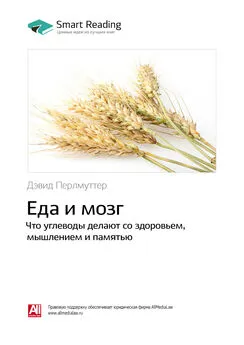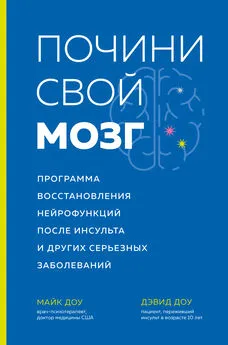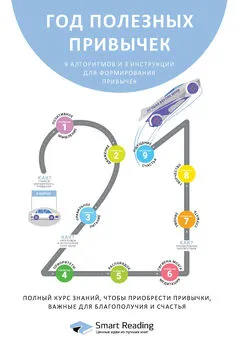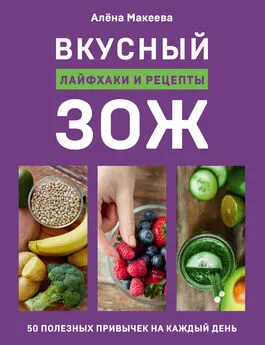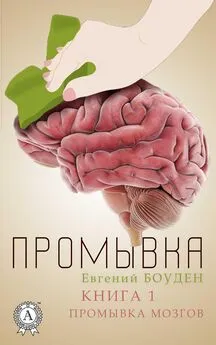Дэвид Перлмуттер - Промывка мозга. Программа для ясного мышления, укрепления отношений с людьми и развития полезных привычек
- Название:Промывка мозга. Программа для ясного мышления, укрепления отношений с людьми и развития полезных привычек
- Автор:
- Жанр:
- Издательство:Литагент МИФ без подписки
- Год:2020
- Город:Москва
- ISBN:978-5-00169-168-6
- Рейтинг:
- Избранное:Добавить в избранное
-
Отзывы:
-
Ваша оценка:
Дэвид Перлмуттер - Промывка мозга. Программа для ясного мышления, укрепления отношений с людьми и развития полезных привычек краткое содержание
На русском языке публикуется впервые.
Промывка мозга. Программа для ясного мышления, укрепления отношений с людьми и развития полезных привычек - читать онлайн бесплатно ознакомительный отрывок
Интервал:
Закладка:
P. Reed et al. “Visual Social Media Use Moderates the Relationship Between Initial Problematic Internet Use and Later Narcissism,” Open Psychol. J. 11, № 1 (September 2018): 163–170.
121
S. J. Woodruff, S. Santarossa, and J. Lacasse. “Posting #selfie on Instagram: What Are People Talking About?” Journal of Social Media in Society 7, № 1 (2018): 4–14.
122
Julia Glum. “Millennials Selfies: Young Adults Will Take More Than 25,000 Pictures of Themselves During Their Lifetimes: Report,” International Business Times, September 22, 2015. Опрос был проведен бостонской компанией Luster Premium White, которая производит средства для отбеливания зубов.
123
R. Lull and T. M. Dickinson. “Does Television Cultivate Narcissism? Relationships Between Television Exposure, Preferences for Specific Genres, and Subclinical Narcissism,” Psychol. Pop. Media Cult. 7, № 1 (2018): 47–60.
124
J. N. Beadle, S. Paradiso, and D. Tranel. “Ventromedial Prefrontal Cortex Is Critical for Helping Others Who Are Suffering,” Front. Neurol. 9 (May 2018): 288.
125
Y. Mao et al. “Reduced Frontal Cortex Thickness and Cortical Volume Associated with Pathological Narcissism,” Neuroscience 328 (July 2016): 50–57.
126
J. T. Cheng, J. L. Tracy, and G. E. Miller. “Are Narcissists Hardy or Vulnerable? The Role of Narcissism in the Production of Stress-Related Biomarkers in Response to Emotional Distress,” Emotion 13, № 6 (December 2013): 1004–1011.
127
R. S. Edelstein, I. S. Yim, and J. A. Quas. “Narcissism Predicts Heightened Cortisol Reactivity to a Psychosocial Stressor in Men,” J. Res. Pers. 44, № 5 (October 2010): 565–572; см. также David A. Reinhard et al. “Expensive Egos: Narcissistic Males Have Higher Cortisol,” PLoS One 7, № 1 (2012): e30858.
128
R. Rogoza. “Narcissist Unmasked. Looking for the Narcissistic Decision-Making Mechanism: A Contribution from the Big Five,” Social Psychological Bulletin 13, № 2 (2018).
129
P. L. Lockwood et al. “Neurocomputational Mechanisms of Prosocial Learning and Links to Empathy,” Proc. Natl. Acad. Sci. USA 113, no. 35 (August 2016): 9763–9768.
130
J. Majdanzic et al. “The Selfless Mind: How Prefrontal Involvement in Mentalizing with Similar and Dissimilar Others Shapes Empathy and Prosocial Behavior,” Cognition 157 (December 2016): 24–38.
131
Экспрессия генов – процесс, в ходе которого информация от генов трансформируется в РНК или белок. Прим. пер.
132
S. K. Nelson-Coffey et al. “Kindness in the Blood: A Randomized Controlled Trial of the Gene Regulatory Impact of Prosocial Behavior,” Psychoneuroendocrinology 81 (July 2017): 8–13.
133
С помощью нейровизуализации доктор Кристина Карнс провела в Орегонском университете множество исследований того, как эмоции (например, благодарность) взаимодействуют с альтруизмом и щедростью. См. ее сайт и список публикаций на https://bdl.uoregon.edu/research/people/staff/christina-karns/.
134
Смотрите RobertWaldinger.com.
135
H. Ohira et al. “Pro-Inflammatory Cytokine Predicts Reduced Rejection of Unfair Financial Offers,” Neuro. Endocrinol. Lett. 34, № 1 (2013): 47–51.
136
M. Wilkes, E. Milgrom, and J. R. Hoffman. “Towards More Empathic Medical Students: A Medical Student Hospitalization Experience,” Med. Educ. 36, № 6 (June 2002): 528–533.
137
S. A. Batt-Rawden et al. “Teaching Empathy to Medical Students: An Updated, Systematic Review,” Acad. Med. 88, № 8 (August 2013): 1171–1177.
138
Джон Мьюр – американский естествоиспытатель, писатель и защитник дикой природы, один из инициаторов создания в США национальных парков и заповедных территорий. Прим. ред.
139
E. M. Forster. “The Machine Stops,” Oxford and Cambridge Review (November 1909).
140
Oliver Sacks. “The Machine Stops,” The New Yorker (February 4, 2019).
141
Связь между природой и здоровьем человека освещена в многочисленных статьях. Недавний обзор смотрите в работе: M. A. Repke et al. “How Does Nature Exposure Make People Healthier?: Evidence for the Role of Impulsivity and Expanded Space Perception,” PLoS One 13, № 8 (August 2018): e0202246.
142
“World’s Population Increasingly Urban with More Than Half Living in Urban Areas,” July 10, 2014. http://www.un.org/en/development/desa/news/population/world-urbanization-prospects-2014.html.
143
Wayne C. Zipperer and Steward T. A. Pickett. “Urban Ecology: Patterns of Population Growth and Ecological Effects,” in Encyclopedia of Life Sciences (Chichester, UK: John Wiley & Sons, 2012), 1–8.
144
См.: WellLivingLab.com.
145
L. T. Stiemsma et al. “The Hygiene Hypothesis: Current Perspectives and Future Therapies,” Immunotargets Ther. 4 (July 2015): 143–157.
146
A. Mihyang et al. “Why We Need More Nature at Work: Effects of Natural Elements and Sunlight on Employee Mental Health and Work Attitudes,” PLoS One 11, № 5 (May 2016): e0155614.
147
N. E. Klepeis et al. “The National Human Activity Pattern Survey (NHAPS): A Resource for Assessing Exposure to Environmental Pollutants,” J. Expo. Sci. Environ. Epidemiol. 11 (2001): 231–252.
148
Sean Simpson. “Nine in Ten (87 %) Canadians Say They’re Happier When They Spend Time in Nature,” Ipsos. https://www.ipsos.com/en-ca/news-polls/Canadians-happier-in-nature.
149
См.: RichardLouv.com.
150
O. R. McCarthy. “The Key to the Sanatoria,” J. R. Soc. Med. 94, № 8 (August 2001): 413–417.
151
Уилсон Э. Биофилия. Врожденная тяга к живому как связь человека с другими биологическими видами. – М.: Ленанд, 2017 . Прим. ред.
152
Stephen R. Kellert and Edward O. Wilson, eds. The Biophilia Hypothesis (Washington, D.C.: Island Press, 1993); см. также: Edward O. Wilson. Biophilia (Boston: Harvard University Press, 1984).
153
R. S. Ulrich. “View Through a Window May Influence Recovery from Surgery,” Science 224, № 4647 (April 1984): 420–421.
154
R. Kjaersti, G. G. Patil, and T. Hartig. “Health Benefits of a View of Nature Through the Window: A Quasi-Experimental Study of Patients in a Residential Rehabilitation Center,” Clin. Rehabil. 26, № 1 (January 2012): 21–32.
155
S. Park and R. H. Mattson. “Effects of Flowering and Foliage Plants in Hospital Rooms on Patients Recovering from Abdominal Surgery,” Horttechnology 18, № 4 (2008): 563–568.
156
C. J. Beukeboom, D. Langeveld, and K. Tanja-Dijkstra. “Stress-Reducing Effects of Real and Artificial Nature in a Hospital Waiting Room,” J. Altern. Complement. Med. 18, № 4 (April 2012): 329–333.
157
B. A. Bauer et al. “Effect of the Combination of Music and Nature Sounds on Pain and Anxiety in Cardiac Surgical Patients: A Randomized Study,” Altern. Ther. Health Med. 17, № 4 (July-August 2011): 16–23.
158
См. сайт Shinrin-Yoku.org.
159
K. Sowndhararajan and S. Kim. “Influence of Fragrances on Human Psychophysiological Activity: With Special Reference to Human Electroencephalographic Response,” Sci. Pharm. 84, № 4 (November 2016): 724–752.
160
Q. Li et al. “A Forest Bathing Trip Increases Human Natural Killer Activity and Expression of Anti-Cancer Proteins in Female Subjects,” J. Biol. Regul. Homeost. Agents 22, № 1 (January-March 2008): 45–55.
161
Q. Li et al. “A Day Trip to a Forest Park Increases Human Natural Killer Activity and the Expression of Anti-Cancer Proteins in Male Subjects,” J. Biol. Regul. Homeost. Agents 24, № 2 (April-June 2010): 157–165.
162
S. Dayawansa et al. “Autonomic Responses During Inhalation of Natural Fragrance of Cedrol in Humans,” Auton. Neurosci. 108, № № 1–2 (October 2003): 79–86.
163
Harumi Ikei, Chorong Song, and Yoshifumi Miyazaki. “Physiological Effect of Olfactory Stimulation by Hinoki Cypress (Chamaecyparis obtusa) Leaf Oil,” Journal of Physiological Anthropology 34 (2015): 44.
164
Sowndhararajan and Kim. “Influence of Fragrances on Human Psychophysiological Activity.”
165
W. Kim et al. “The Effect of Cognitive Behavior Therapy – Based Psychotherapy Applied in a Forest Environment on Physiological Changes and Remission of Major Depressive Disorder,” Psychiatry Investig. 6, № 4 (December 2009): 245–254.
166
D. T. C. Cox et al. “Doses of Nearby Nature Simultaneously Associated with Multiple Health Benefits,” Int. J. Environ. Res. Public Health 14, № 2 (February 2017): 172.
167
C. A. Capaldi, R. L. Dopko, and J. M. Zelenski. “The Relationship Between Nature Connectedness and Happiness: A Meta-Analysis,” Front. Psychol. 5 (September 2014): 976.
168
G. MacKerron and S. Mourato. “Happiness Is Greater in Natural Environments,” Glob. Environ. Change 23, № 5 (October 2013): 992–1000.
169
Пьеса «Троил и Крессида». Прим. пер.
170
Больше о работе Ронды Патрик см. на FoundMyFitness.com.
171
P. K. Piff et al. “Awe, the Small Self, and Prosocial Behavior,” J. Pers. Soc. Psychol. 108, № 6 (June 2015): 883–899.
172
M. Rudd, K. D. Vohs, and J. Aaker. “Awe Expands People’s Perception of Time, Alters Decision Making, and Enhances Well-Being,” Psychol. Sci. 23, № 10 (October 2012): 1130–1136.
173
J. W. Zhang et al. “An Occasion for Unselfing: Beautiful Nature Leads to Prosociality,” J. Environ. Psychol. 37 (March 2014): 61–72.
174
Интервал:
Закладка:
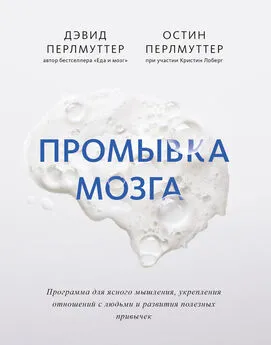
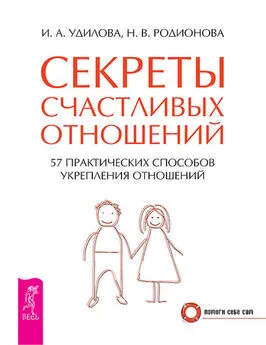
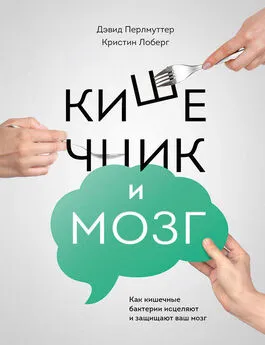
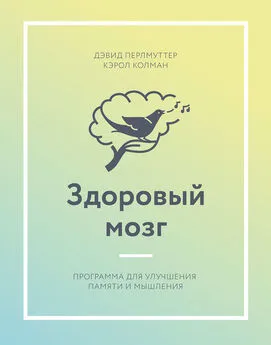
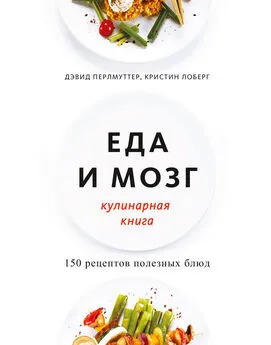
![Дэвид Доу - Почини свой мозг. Программа восстановления нейрофункций после инсульта и других серьезных заболеваний [litres]](/books/1143582/devid-dou-pochini-svoj-mozg-programma-vosstanovlen.webp)
